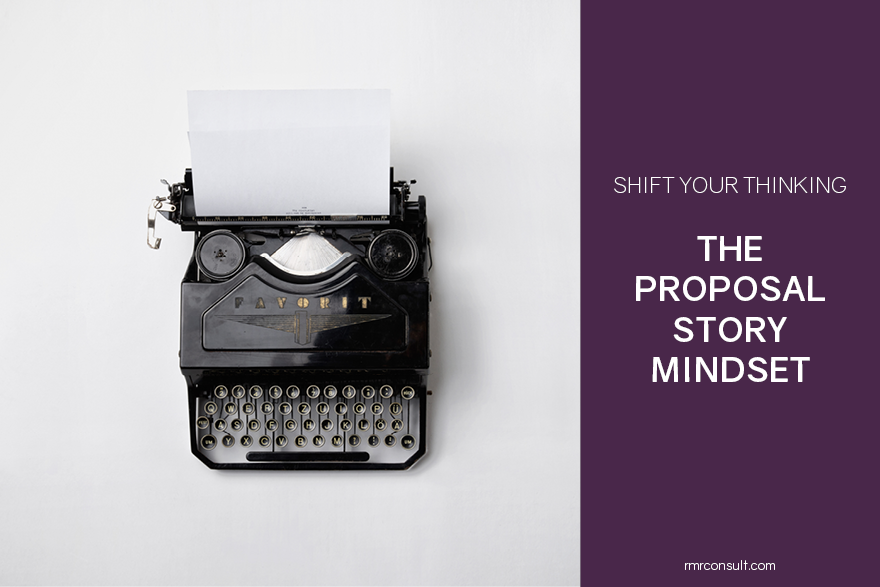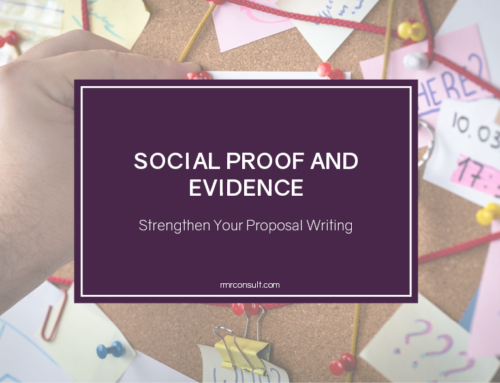The Proposal Story Mindset
I’m going to let you in on a secret today: proposals are boring. Not all, mind you. They’re time-consuming and tedious, both to write and to read. But I’ll tell you another secret: they don’t have to be. All it takes is a shift in our mindset, and we can transform our proposals from boring business documents to engaging and interesting works. The secret is to find your proposal story.
We like stories. They’re fun to read and to tell, and they’re far more exciting than a proposal. What would you rather cozy up with on a rainy afternoon – a good book, or a stack of proposals?
Instinctively, we often read a request for proposals (RFP) as a series of questions to be answered in isolation. We add our firm introduction to section one, resumes to section two, project sheets to section three, and print. Written this compartmentalized way, proposals become a disjointed and sometimes incoherent jumble of information. At worst, they’re difficult to read, at best, they’re boring and only meet the minimum requirements.
If we look at a proposal holistically, though, as a story, it instantly becomes more interesting. Your proposal story comes complete with a plot, theme, and characters that all work together to weave a tale that engages and excites the reviewer.
Plotting your proposal story
The plot of your story comes straight from the RFP. You’ll use the evaluation criteria and requirements outlined in the RFP to create your story’s structure.
Start by reading through the entire RFP and highlighting all of the requirements. Make notes of any areas where you will need clarification, and any inspiration for content you might want to include in response to the questions.
Create a separate document (i.e., your proposal management plan or responsibilities matrix) to note all proposal requirements. This will make it easier for you to develop your proposal outline and quickly reference proposal requirements later on. Make sure that you pay attention to all of the requirements, from formatting (font, margins, etc.) to required documents. Check for clarifications to questions, which might be buried elsewhere in the RFP.
Developing your theme
Every good story has a solid theme. Similarly, every great proposal has a strong theme; in our case, though, it’s a win theme or a guiding strategy that will help tie all of the proposal elements together.
Like a literary theme (you know, good vs. evil, man vs. nature, etc.), your proposal story theme links the sections of your proposal like the chapters of a book, weaving details together. This makes the document flow together, rather than having it read like a stale, compartmentalized response to each of the RFP questions.
Ultimately, a win theme is the central message of your proposal. It is the backbone of the story you tell the reviewer: the story about why you, and only you, can overcome the client’s project challenges.
A good win theme identifies client challenges (i.e., pain points), features of your firm that can solve those challenges, and explains the benefits of using your firm’s specific features to address the challenge. Understanding client motivations is key to developing your proposal strategy and articulating your win theme. The more information you can gather about the client and the project, the more accurate your strategy will be, and the more your theme will resonate with the reviewer.
A strong theme will resonate in the projects you include for your portfolio, the team that you propose for the project, in your firm description (tailored to discuss how you’re the perfect fit for the project), and in your approach.
Proposal win themes also have the power to unite your team, improving proposal team management, and creating a culture of buy-in to the proposal process.
Casting the characters in your proposal story
The team that you present to the client is important for two reasons: they need to be a good fit for the project, and they need to be a good fit for the proposal development.
Choosing your in-house team depends on the size of your company and how you operate. Your team members might wear multiple hats, or you might have whole departments that specialize in a particular service or market area. The availability of your staff will also play a part in your staffing selection; you probably don’t want to assign a Project Manager that’s already at capacity for the next six months to a new project.
Be mindful of who you select for your team in a proposal sense as well. Key players, like your Project Manager, need to be involved from the very beginning. Your project manager or team leader, and often the principal in charge, will likely need to be involved in some aspects of the proposal development. At the very least, they need to be involved in the strategy session and have input on win theme development. You may also need them to draft content, though. For instance, a technical approach needs to be written by the person who will be leading the project.
Think about it – it doesn’t make a lot of sense for someone who won’t be involved in the project (like your marketing coordinator or a project manager with a different management style) to draft a management plan. At best, it will be vague on details; at worst, it won’t be anything like the management plan you actually put into action. It’s important that you deliver on the promises you make in your proposal, so make sure everyone who will be involved in the project is involved in the proposal.
As you create the resumes for your proposal, keep your win theme and your proposal story in mind. Remember that your team members are characters. We want them to sound interesting, like the heroes of a story, with unique abilities to overcome client challenges. An excellent way to test whether your resume bio is boring, boilerplate, and not engaging with your story is to swap out the person’s name for someone else’s.
For example, I often read biographies that say things like:
Jan is an accomplished project manager with significant experience in delivering similar project types.
If we replace the name ‘Jan’ with Stan, Dan, or any other name, the statement still holds up. That means it hasn’t spoken to the win theme and hasn’t captured the most important aspects of our team member’s abilities.
…and they all lived worked happily ever after
It might seem far-fetched to equate a proposal to a story. If you think about it, though, even non-fiction books have themes and a strong central message that resonates in every chapter. Your proposal is no different. That central message is what the reviewer needs to know to select your team over all the rest, so it needs to stand out loud and clear on every single page.






Leave A Comment